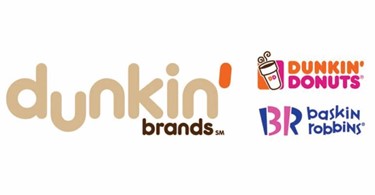Restaurant And Hospitality News – November 9, 2017

By Christine Kern, contributing writer

In news this week, Dunkin’ Brands invests and considers rebranding to boost sales; while loyalty programs draw U.S. travelers but still have work to do to leverage big opportunities.
Dunkin’ Brands Invests $100 Million In Locations And Considers Rebranding
In the wake of this Fall’s devastating hurricanes, Dunkin’s Brands reported dampened sales and has announced the investment of some $100 million in its store locations, with a potential rebranding on the horizon as well. In its third-quarter results released October 26, Dunkin’ Brands said that it remains on track to make its full-year revenue and earnings guidance, despite temporary losses from restaurant closings resulting from recent hurricanes in Texas, Florida, and Puerto Rico. While Dunkin’ Donuts’ U.S. comparable-store sales were up 0.6 percent and saw increased average ticket sales offset an overall decline in traffic, Comps at Baskin-Robbins’ U.S. locations fell 0.4 percent as a result of lower traffic. Dunkin Brands management asserted, however, that the comps at both chains would have been 50 and 120 basis points higher, respectively, without the impact of weather-related events. In the greater Houston area, most of the 28 Dunkin’ Donuts and 42 Baskin-Robbins restaurants were forced to close temporarily due to Hurricane Harvey, while more 1,000 of the company’s Florida restaurants were closed by Irma. Ten of 21 Baskin-Robbins in Puerto Rico are still closed after facing damage from hurricanes.
Meanwhile, the Boston Herald reported that Dunkin’ Brands announced a $100 million investment in its U.S. Dunkin’ Donuts locations and a potential name change to simply Dunkin’ nationwide, suggesting a desire to move away from its iconic donut brand. Currently, the new name is being beta tested by one California location, and a new store in Quincy will go by Dunkin’ when it opens.
CEO Nigel Travis explained, “We’re testing things, but at the moment, we are Dunkin’ Donuts,” and he stated that whatever the brand name, the chain would continue to make and sell donuts either way. The $100 million investments noted above will help “ignite the transformation of Dunkin’ Donuts into a beverage-led ‘On-the-Go’ brand,” Travis stated, including digital investments in the DD Perks mobile app rewards program, mobile ordering, and investments in beverage and drive-thru technology, and a new store design. “This is about investment that will help drive the Dunkin’ Donuts U.S. blueprint for growth,” Travis asserted.
Loyalty Programs Draw U.S. Travelers
New data from Phocuswright and Acxiom revealed that 80 percent of U.S. travelers were members in some type of travel-related loyalty program like a frequent flier miles program. According to eMarketer, digital travel sales in the US are projected to reach $189.62 billion in 2017 and $219.69 billion by 2021. That means that loyalty programs are an important tool to drive revenues.
According to the March Phocuswright and Acxiom survey, business travelers were more committed to loyalty programs than leisure travelers across every segment of travel, with 62 percent of business travelers stating they had registered for a hotel’s loyalty plan, compared to just 54 percent of leisure travelers. When it came to airline loyalty programs, the results were similar: 60 percent of business travelers to 50 percent of leisure travelers.
And yet, while travel loyalty programs are popular among travelers, among consumers overall they fall behind retail loyalty programs in numbers and adoption. A CrowdTwist survey of internet users found that while retail loyalty programs had the highest adoption numbers among adults ages 18 to 37, travel and hospitality programs were lost in the middle of the pack.
While retailers have been diligent about addressing their loyalty programs to attract customers, and many restaurant chains have also jumped on the rewards train to boost sales, travel and hospitality in general has quite a ways to go before they are fully in the game with their customers. A February poll of US loyalty members by Bond Brand Loyalty revealed that airline and hotel loyalty programs were seriously lacking when it came to customer satisfaction. Just 39 percent of respondents said they were satisfied with their airline program, and just 38 percent with their hotel rewards program.
